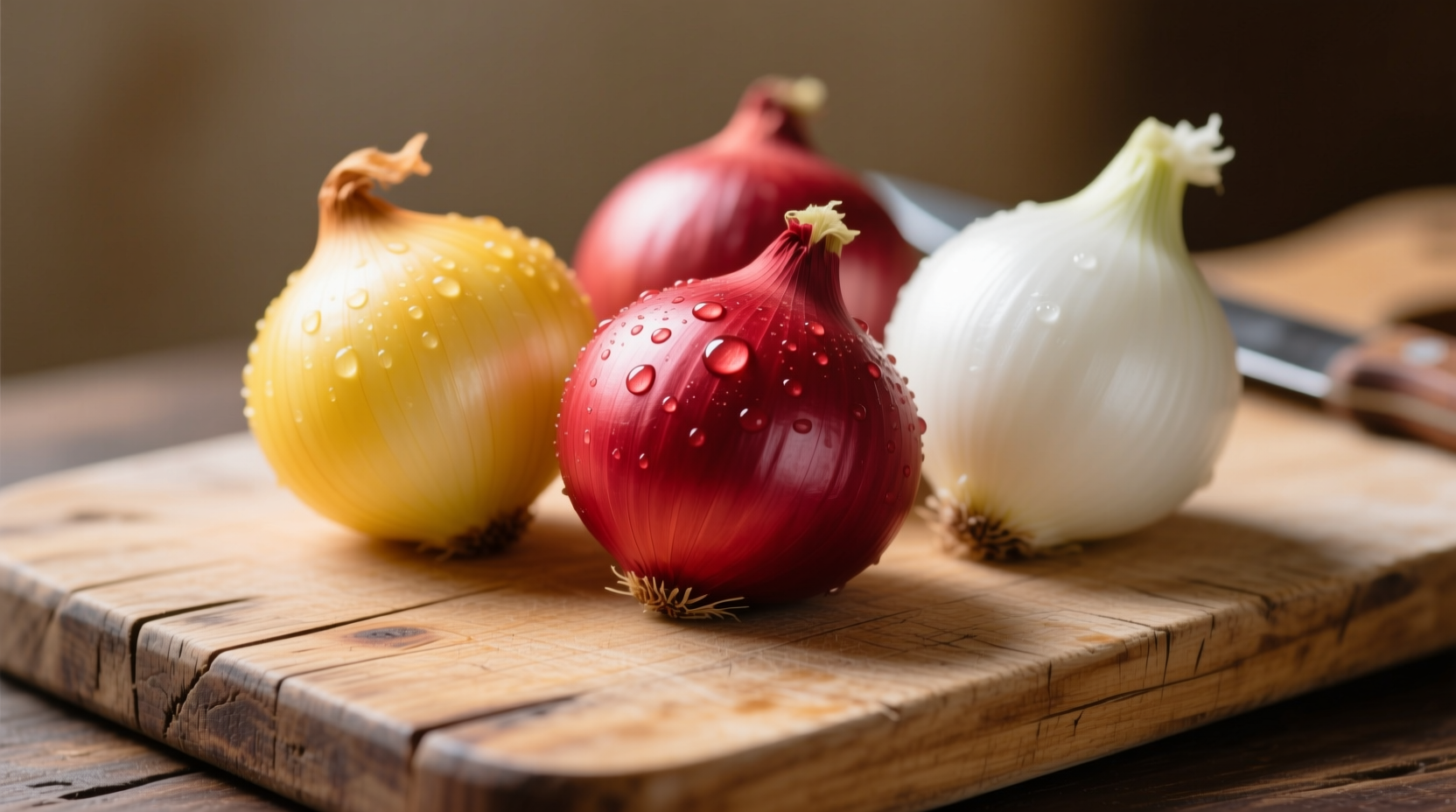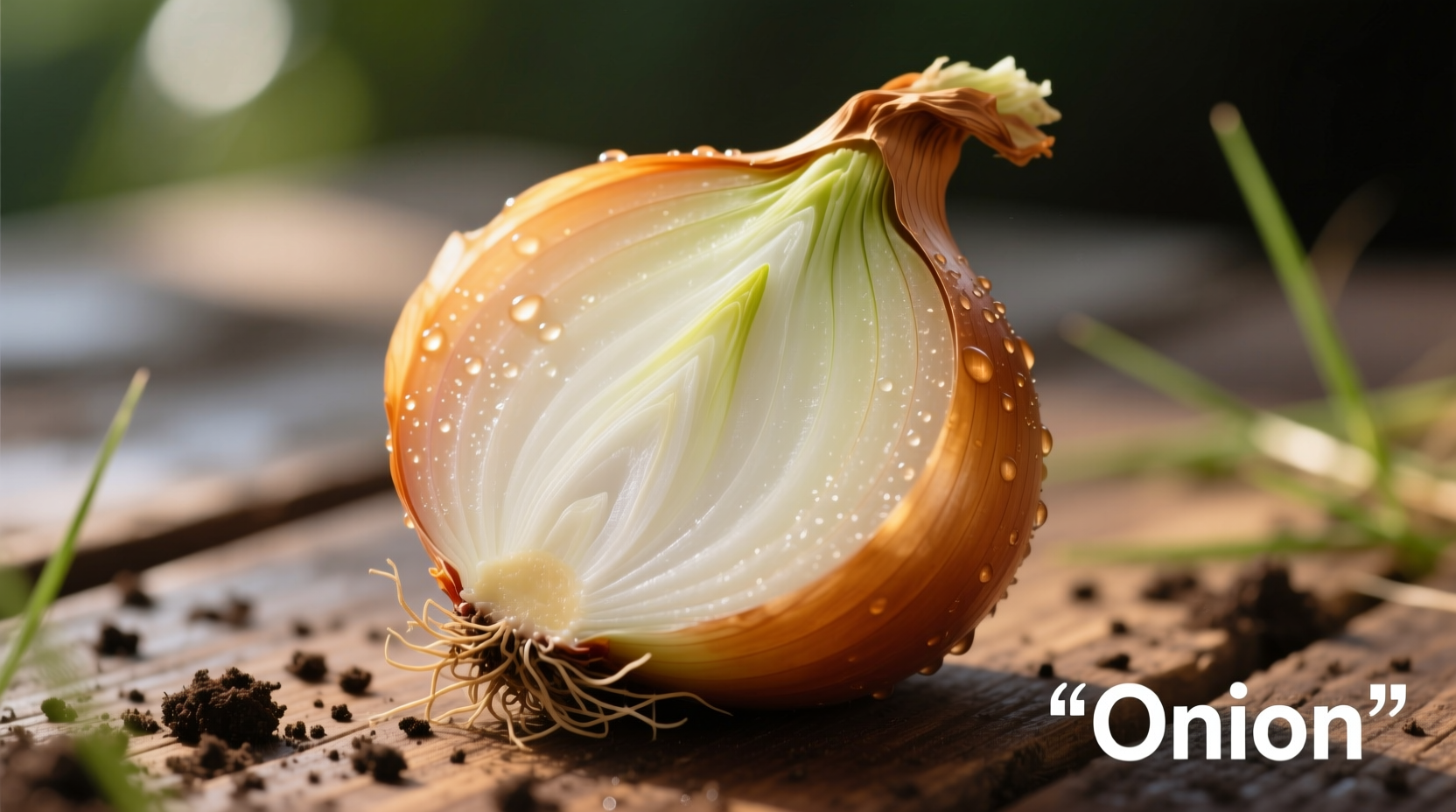When you reach for that pungent bulb in your kitchen, you're grabbing one of humanity's oldest cultivated plants. Onions form the flavor foundation of countless dishes worldwide, but many home cooks wonder: are onions actually vegetables? Understanding this versatile ingredient's classification, nutritional profile, and practical applications can transform your cooking and health.
Botanical Reality vs. Culinary Classification
From a strict botanical perspective, onions (Allium cepa) aren't technically vegetables but rather modified leaves forming a bulb. The edible part consists of fleshy leaf bases surrounding a short stem. However, in culinary and nutritional contexts, onions are universally classified as vegetables. This distinction matters because:
- Nutrition guidelines like the USDA's MyPlate categorize onions with vegetables
- Culinary traditions worldwide treat onions as vegetable ingredients
- Food labeling regulations consider onions vegetables
This dual classification explains why you'll find onions in both the vegetable aisle and botanical textbooks describing them as "modified underground stems." For practical cooking and nutrition purposes, onions function as and are considered vegetables.
Onion Varieties: Choosing the Right Bulb
Not all onions perform equally in every dish. Understanding the differences between varieties helps you select the perfect onion for your culinary needs. The three primary types serve distinct purposes in the kitchen:
| Variety | Flavor Profile | Best Culinary Uses | Storage Life |
|---|---|---|---|
| Yellow Onions | Strong, pungent when raw; sweet when cooked | Soups, stews, caramelizing, roasting | 2-3 months |
| Red Onions | Sharp, mildly sweet | Salsas, salads, pickling, grilling | 3-4 weeks |
| White Onions | Crisp, clean flavor | Mexican cuisine, fresh salsas, guacamole | 1-2 months |
This comparison comes from the USDA Agricultural Research Service's vegetable classification guidelines, which recognize these distinctions for both commercial and home cooking applications. Specialty varieties like Vidalia (Georgia), Walla Walla (Washington), and shallots offer additional flavor dimensions for specific culinary applications.
Nutritional Powerhouse: What Makes Onions Special
Onions deliver impressive nutritional benefits beyond their flavor contributions. A single medium onion (110g) provides:
- Approximately 44 calories
- 10% of daily vitamin C needs
- Significant potassium and folate
- Dietary fiber (1.9g)
- Powerful antioxidants like quercetin
Research from the National Center for Biotechnology Information confirms that onions contain organosulfur compounds responsible for their pungent aroma and many health benefits. These compounds demonstrate anti-inflammatory and antioxidant properties that may contribute to cardiovascular health when consumed regularly as part of a balanced diet.

Health Benefits: Science-Backed Evidence
While no single food provides miracle cures, onions contribute meaningfully to a health-promoting diet. Scientific studies published in the Journal of Agricultural and Food Chemistry reveal several evidence-based benefits:
- Cardiovascular support: Onion consumption correlates with improved cholesterol profiles and blood pressure regulation
- Antioxidant activity: Quercetin in onions helps combat oxidative stress
- Digestive health: Prebiotic fibers in onions feed beneficial gut bacteria
- Bone density: Some research suggests onions may support bone health in postmenopausal women
It's important to note that these benefits emerge from regular consumption as part of a balanced diet, not from eating onions in isolation. The World Health Organization recognizes onions as part of traditional medicinal systems worldwide, though they emphasize that onions complement rather than replace medical treatments.
Culinary Applications: Maximizing Flavor Potential
Professional chefs leverage onions differently based on preparation methods. Understanding these techniques transforms ordinary cooking:
Raw Applications
When using raw onions:
- Soak sliced red onions in ice water for 10 minutes to reduce sharpness
- Use white onions in fresh salsas for authentic Mexican flavor profiles
- Add raw onions at the end of salad preparation to maintain crispness
Cooked Transformations
Cooking fundamentally changes onion chemistry:
- Caramelization: Yellow onions develop complex sweetness after 30-40 minutes of slow cooking
- Sweating: Cooking onions over medium heat without browning creates a flavor base for sauces and soups
- Roasting: Whole onions develop concentrated sweetness when roasted with olive oil
The American Chemical Society explains that heating onions breaks down enzymes responsible for their pungency while triggering Maillard reactions that create hundreds of new flavor compounds. This scientific transformation explains why properly cooked onions taste nothing like their raw counterparts.
Practical Growing Guide for Home Gardeners
Onions rank among the easiest vegetables to grow at home. The USDA Natural Resources Conservation Service recommends these fundamentals:
- Planting time: Early spring for most varieties; fall planting in mild climates
- Soil requirements: Well-drained, loose soil with pH 6.0-7.0
- Spacing: 4-6 inches between plants for bulb development
- Watering: Consistent moisture, especially during bulb formation
Understanding your region's day-length requirements proves crucial. Long-day varieties (14-16 hours of light) work best in northern latitudes, while short-day varieties (10-12 hours) suit southern regions. The Agricultural Marketing Resource Center provides detailed regional planting guides to help home gardeners select appropriate varieties.
Proper Storage: Maximizing Shelf Life
Improper storage causes most onion waste in home kitchens. Follow these evidence-based storage methods:
- Store whole, dry onions in a cool, dark, well-ventilated space (not the refrigerator)
- Keep away from potatoes, which emit gases that accelerate onion spoilage
- Refrigerate cut onions in airtight containers for up to 7 days
- Freeze chopped onions for longer storage (though texture changes)
The National Onion Association confirms that proper storage conditions can extend yellow onion shelf life to 2-3 months. Signs of spoilage include soft spots, mold, or strong unpleasant odors. Sprouting doesn't necessarily indicate spoilage but does signal decreasing quality.
Common Questions About Onions
Are onions technically vegetables?
While botanically classified as modified leaves, onions are universally considered vegetables in culinary, nutritional, and agricultural contexts. Food guidelines including the USDA's MyPlate categorize onions with vegetables for dietary purposes.
Which onion variety is healthiest?
Red onions generally contain higher levels of antioxidants like quercetin and anthocyanins compared to yellow or white varieties. However, all onion types offer significant nutritional benefits, and variety in consumption provides the broadest range of health-promoting compounds.
Can you eat sprouted onions?
Sprouted onions remain safe to eat, though quality decreases. Remove the green sprout before use, as it can taste bitter. The rest of the onion is edible if firm and free from mold or soft spots. Sprouting indicates the onion is aging but doesn't necessarily mean spoilage.
Why do onions make you cry?
When cut, onions release enzymes that create syn-propanethial-S-oxide, a volatile gas that reacts with eye moisture to form mild sulfuric acid. Chilling onions before cutting, using sharp knives, or cutting under running water can minimize this reaction by slowing enzyme activity.
How can I reduce onion breath?
Eating fresh parsley, drinking lemon water, or chewing coffee beans can help neutralize onion breath. The chlorophyll in parsley and citric acid in lemon help break down sulfur compounds responsible for the lingering odor. Thorough brushing and flossing also reduce odor-causing bacteria.











 浙公网安备
33010002000092号
浙公网安备
33010002000092号 浙B2-20120091-4
浙B2-20120091-4